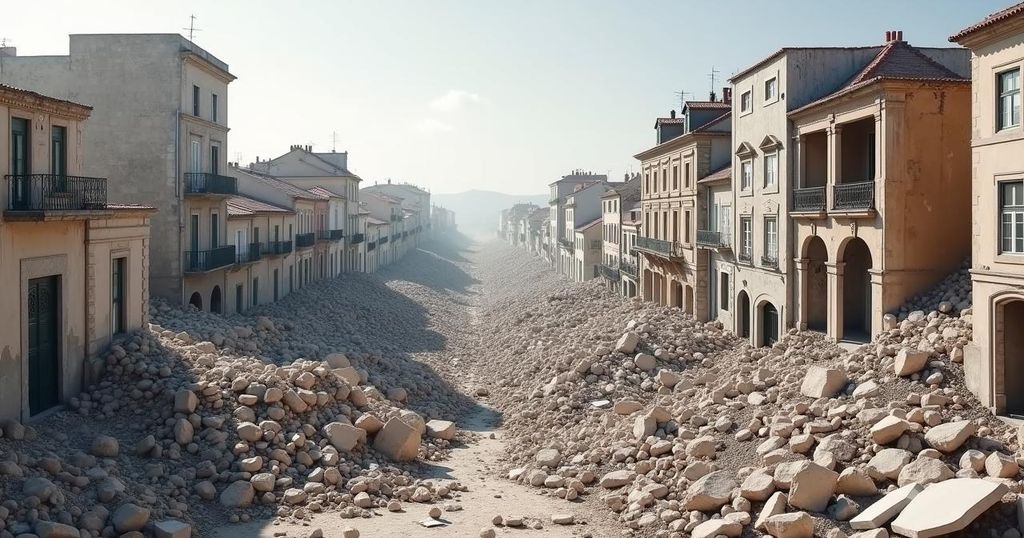The 1755 Lisbon Earthquake: A Catastrophic Event in History
The Lisbon earthquake of 1755 was a devastating natural disaster that struck on November 1, killing approximately 60,000 people and causing widespread destruction in Lisbon, Portugal. The earthquake, caused by tectonic movements along the mid-Atlantic plate boundaries, generated a significant tsunami impacting areas as far away as Martinique. The event prompted reflections on religious and philosophical themes, influencing European history and disaster preparedness efforts thereafter.
The Lisbon earthquake of 1755, which occurred on November 1, was a catastrophic event that devastated the port city of Lisbon, Portugal. Estimated to have claimed the lives of approximately 60,000 individuals, the earthquake was characterized by violent tremors that caused the collapse of many significant public structures and around 12,000 residential buildings. Coinciding with All Saints’ Day, the quake struck while many residents were attending church services, resulting in the tragic loss of numerous worshippers as the church buildings succumbed to the force of the earthquake. Contemporary geological studies have identified the primary cause of this seismic event as faulting along the tectonic plate boundaries beneath the Atlantic Ocean. The earthquake triggered a powerful tsunami, generating waves that reached heights of about 20 feet (6 meters) in Lisbon and up to 65 feet (20 meters) near Cádiz, Spain. Remarkably, these waves traveled across the Atlantic, reaching as far as Martinique in the Caribbean, where they rose to 13 feet (4 meters) above mean sea level. Additionally, the effects of the quake and the resultant tsunami were felt as far away as Algiers, located 685 miles (1,100 kilometers) to the east. The tragic aftermath of the quake also included fires that raged throughout Lisbon for nearly six days, further exacerbating the human toll. The devastating events of the Great Lisbon Earthquake have been immortalized in art and literature, establishing it as a pivotal moment in the historical narrative of Europe.
The Lisbon earthquake of 1755 represents one of the most significant natural disasters in European history, not only due to the immediate destruction it caused but also for its profound impacts on societal and political consciousness in the region. Occurring on a day of religious significance, the event prompted widespread reflection on themes of faith, morality, and the nature of divine wrath versus natural phenomena. This earthquake, along with its resulting tsunami and subsequent fires, greatly influenced both the scientific understanding of earthquakes and the philosophical discourse surrounding the nature of disasters in society during the Enlightenment.
In conclusion, the 1755 Lisbon earthquake stands as a landmark event that reshaped not only the city of Lisbon but also had a far-reaching impact throughout Europe and beyond. The catastrophic loss of life and property sparked significant changes in urban planning, disaster response, and philosophical thought. The tragedy also prompted advancements in scientific inquiry about tectonic activity and seismic phenomena. Ultimately, the memory of this disaster has been enshrined in cultural expressions, underscoring its enduring influence in the annals of history.
Original Source: www.britannica.com




Post Comment